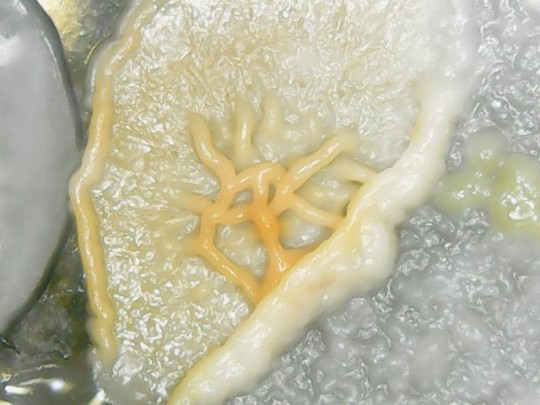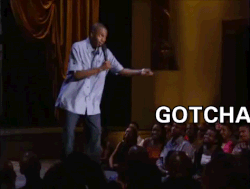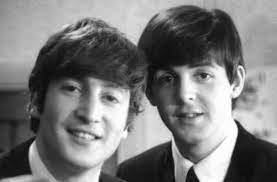#science of deduction
Text
Algae and Forensics
If you watch a lot of crime shows, you may have seen algae being used to help solve a crime. In Dexter, the algae on the victims was used to determine the port they came from, which led them to Dexter. Or Hannibal, where the algae led the FBI to Miriam Lass. A lot of crime shows play forensics up, but algae actually can be an important tool for helping solve a crime.
The presence of algae, or lack thereof, can tell us several things. Is there algae present in the closed organs of the decedent? If so, that tells you they were drowned or whether or not they were taken to a second location. What kind of algae? This can help us determine fairly accurately where the victim was drowned. This doesn't include bathwater or water with too few diatoms, such as ice water.
But how? Let's look into that.

First off, I will be using the term "Diatoms." If you are unaware, diatoms are a type of photosynthesising algae, so I will be using the terms interchangeably.
There are over 15,000 species of algae living in brackish, fresh water, and sea water. Ponds, lakes, rivers, oceans, and coastal areas all have different diatom communities, and using that we can identify where the victim might have been killed.
When you drown, liquid is aspirated into the lungs and enters the bloodstream through alveoli. This lets particles such as sediments, microorganisms, or pollen to be carried to organs and deposited in capillaries. This means that diatoms can be found in the organs of a drown victim.
So, if diatoms are found in distant organs or closed systems and are of a great abundance, the cause of death is most likely due to ante-mortem drowning. This lets us know that the victim was drowned and was not just dumped posthumously.
Thanks to diatoms acid resistant sillica shell, they can easily be separated from tissue using acid-digestive extractions, and they are detectable in burned or putrified corpses. This means that drowning as a cause of death could be determined in a burnt victim that was taken to a second location.

Algae is also being researched for its use as a time of death indicator. A study was conducted by forensic scientists, who found the diversity of algae on piglet bodies in water tended to decrease over time with a peak in diatoms recorded after 1-8 days of decomposition. This kind of work remains largely experimental, but it has the potential to be used for establishing a timeline since death (or submersion) in water.
Algae can be useful for linking criminals to their crime scenes, as diatoms can transfer onto clothing or footwear. Comparing microflora with the diatoms found could also give you a general area or type of water they were drowned in, as a swamp would have different algae than say, the ocean.
This evidence isn't damning in and of itself, but all evidence at a crime scene is valuable for solving the crime, and as such, algae can be an important part of forensics.
Thanks for reading! Have a good day and a cup of tea :)
#forensics#dexter#sherlock#forensic science#mortuary science#algae#my favorite thing in the whole world is the intersection of forensics and marine biology#marine biology#biology#marine flora#✨️science✨️#djxbbdshhshsn#im tired as fuck#not that anyone asked#:>#criminologist#criminology#crime#crime solving#with ✨️forensics ✨️#woo#sherlockian#deduction#science of deduction#deductionist#deductive reasoning#marine biologist#marine life#microflora
65 notes
·
View notes
Text
Culturing Bacteria in a Petri dish With Agar; an experiment/observation

Today's post is quite different from the usual;
So, we had to do a project in the educational institution I study in; Which was growing bacteria in a Petri dish with agar.
Today, the results came in, but our professor insisted that we have to throw the dishes in the bin. I didn't give up there; after talking to her for a short amount of time, she accepted that I can take the dish with me to my flat, and have a look at it with microscope.
I still cannot comprehend why other students were disgusted by them; they are beyond wonderful.
Allow me to explain this astonishing journey:
What exactly is agar?
Well, agar, derived from the minute aquatic organism known as seaweed or algae, specifically the types Gelidium or Gracilaria, is a widely employed gelling agent. Found abundantly in the coastal regions of East Asia, particularly Japan and South Korea, it undergoes a process of cleaning and extraction to obtain agar in its usable forms of dry strips, flakes, or powdered consistency.
Now, when it comes to the realm of cell and bacterial culture, agar assumes a pivotal role as a solidifying and gelling medium within culture media. Its remarkable gel-forming properties allow for the creation of a three-dimensional matrix, offering an ideal environment for the growth and sustenance of cells and bacteria alike. Nutrients and metabolites find efficient transfer within this agar-based culture medium, while its structural integrity ensures the confinement of cells to designated areas.
Agar's utilization in cell and bacterial culture provides a multitude of advantages, including its ease of implementation, stability, and facilitation of cell separation procedures. The versatility of agar finds application in diverse fields, from microbiology to biotechnology and pharmaceutical industries.
Bacteria can be found on any surface, anywhere.
I decided to pick them up from my shoe soles.
After extracting bacteria from the soles of the shoes, I cultured them in an agar-containing Petri dish. After one week, I observed bacterial and fungus growth in this environment. Here are some images I captured with my microscope:



Wonderful, aren't they?
ND
#bacteria#fungus#deduction#tumblr#deducter#deduce#deductive reasoning#science of deduction#tumblrpost
41 notes
·
View notes
Text
WHAT PRACTICE MAKES
The good thing about being in robot mode is you get to channel all that into things like old hobbies. Let’s be honest, I’m probably not gonna post in a long time, after this.

So, everyone knows the saying: “practice makes perfect”, and if you hadn’t heard of it, there you go. When it comes to deduction and most things, practice is essential. What you practice is nearly irrelevant. When you practice, getting warmer— consistency is key. However, I wanna talk about how you practice.

If you’ve circulated the deduction community, you’ll see all these pioneer deductionists who have years and years, maybe even decades of experience. Are all of them good? Not really. A person doing it for 6 months could get better results than them, but why? Why, after all these years are some deductionists still inadequate after so much experience?
The truth is, practice does not exactly make perfect, it makes normal.
These deductionists are practicing incorrectly. They go on reddit or facebook and deduce people, maybe go out in real life and get their material there and simply assume they’re right. They have no confirmation. Now, this may seem a little ironic, but I don’t believe in people getting involved in your process. You only need yourself, and whoever your deducing (or the extension of them, like their belongings). Unfortunately, this means you have to socialize and do research.
Don’t just assume you’re right.
Whenever you’re deducing someone, make sure you have them there, available to confirm and deny.
Don’t just ask what you got right and wrong. Try to explore why it is you were wrong, what set them apart from the baseline.
When you get a lucky, improbable deduction, still ask which factors contributed to this phenomenon. Ask, ask, ask.
How do you ask? Just be as mysterious and ominous, then direct as possible. That’s the 1-2-step. Be enticing and mysterious, then tell the truth. I go on whisper or reddit. I make a post that goes: “I bet you I could tell you who you are by seeing a picture of you or anything you own. NO NUDES OR FOOT PICS.”
Just being honest about that last part. People get confused.
So, what’s the moral of the story? Practice makes normal, perfect practice makes progress. I am coining that and you all have to monetarily compensate me whenever you use that, thanks. This is a pretty short post, but if you have any questions, feel free to ask them. I’ve got nothing going on in my life and I may just throw myself into deduction, who knows? This may be my renaissance, or something.
TDP

#deduction#bbc sherlock#sherlockbbc#deductive reasoning#deductive logico#logicalreasoning#science of deduction#deduce#reasoning#sherlock holmes#mystery
8 notes
·
View notes
Text
“Am I… Expected?” No, but this update to“A Study in Silmarils” surely is!
Chapter 2: Read on AO3
Reunion dinner with Mother and Father is just as tense as before, only made worse when dinner becomes the pretense for a marriage match… with Sir. Celeborn Doriath. But Galadriel Noldor has other things on her mind… and the wine doesn’t help matters in the slightest.

Haladriel | Explicit | 2.5K Chapter
Sherlock Holmes Haladriel AU
From Chapter 2:
My mouth ran over that strange name again. Mairon Halbrand… No recollection came to me, not even in my drunken mist of a brain. Of course he knew I was a doctor, had probably overheard much of my conversation-turned-shouting match with Mr. Bart. Then, that one part that had needled me this whole time finally came to light.
Afghanistan. How had Mr. Halbrand known? How could he have known?
I bolted from my chair that instant, the wooden legs screeching hard enough to bring the rest of the diners in the Savoy to a hush. “I have to go,” I muttered, grabbing my reticule.
“You most certainly will not,” Father hissed.
“I have something I have to attend to,” it was all I could manage as I slipped far enough way to stay out of his meaty hands and their grip.
“What will we tell Sir Celeborn?” Mother, always nervous, always covering with excuses.
“I’ve become indisposed. Feeling faint,” I fanned my definitely red cheeks. “Set another date and I will meet him then.” Why not have my parents think I’ve appeased them, and I swallowed as I made my way past table after table of onlookers.
But I had questions that needed answering. I needed to get to 221b this moment.
Read More on AO3
#haladriel#Sherlock Holmes#Mr. Mairon Halbrand#Doctor Galadriel Noldor#introducing Sir Celeborn Doriath#science of deduction#sherlock au#victorian sherlock#sauron#the rings of power#saurondriel#halbrand#rings of power#lotr rings of power#lotr rop#sauron x galadriel#haladriel fanfic
26 notes
·
View notes
Text
Deduction exercise - Super spy
As we know everyone in the community learn deduction from looking at someone's bedroom and deduce.
I'd like you to take the next level on this.
...
Observe your room.
Deduce.
Pick and choose some details and change it to the opposite of what you've been doing.
Or adjust them so that the pattern is harder to understand.
No one will be able to deduce who you are.
Cover your trace.
...
Example:
Half of my room I'll leave as it is but half of it will be organized OCD.
I'll have cups on both sides of my tables.
And so on.
...
Let's bring a little chaos to the order world of deduction.
Bring some Yin to the Yang.
14 notes
·
View notes
Text
Anna's Special Birthday

Anna thought to herself:
“If you add up the digits in my birthday (stated in month/date format) and then add the digits in the result until you have a one-digit number, you get 3. If you do that with John Lennon’s birthday, you get 1. If you do it with Paul McCartney’s birthday, you get 5.
"Oh, wow! My birthday is the average of John and Paul’s birthdays. That’s amazing. I have like the best birthday ever. Yay, for my special birthday.”
Anna’s birthday is in the first half of December. What is it?
5 notes
·
View notes
Text
Second post in like 2 minutes but yk what’s fascinating? Mind hunter
Like genuinely. If I hadn’t watched that show I never would’ve thought about criminals in a different mindset. I mean, the way that we see them as nothing more than just a criminal. But if you look inside their mind, figure out why, understand their background and their identity and the motive makes so much more sense than the information you would’ve gained without it.
Put it this way. A female murderer who targets young boys and nurses because the baby boys she tried to have were murdered during their births sounds a lot more appealing than me just saying a female that murders young boys and nurses, understanding the reason why gives you more insight and helps you to empathise with your criminal. I know that during the time someone would be trying to find a killer it probably wouldn’t help, but thinking this way can narrow it down Yk? Hehe
#science of deduction#deduction#deductionist#mind hunter#why did they have to cancel it#it was so good
1 note
·
View note
Text
I sprang from my chair and limped impatiently about the room with considerable bitterness in my heart.
“This is unworthy of you, Holmes,” I said. “I could not have believed that you would have descended to this. You have made inquires into the history of my unhappy brother, and you now pretend to deduce this knowledge in some fanciful way. You cannot expect me to believe that you have read all this from his old watch! It is unkind, and, to speak plainly, has a touch of charlatanism in it.”
“My dear doctor,” said he, kindly, “pray accept my apologies. Viewing the matter as an abstract problem, I had forgotten how personal and painful a thing it might be to you. I assure you, however, that I never even knew that you had a brother until you handed me the watch.”
This is such a touching passage. It shows us a piece of Watson's personal history, and his continued pain about it, and shows us as well that while it is true that Sherlock Holmes can get carried away in his work occasionally and then forget to consider other's feelings, he also is able to recognise them very well and apologise for his insensitivity. This has to be a significant point in Watson's and Holmes' relationship
105 notes
·
View notes
Note
Just curious how do you employ your deductive methods in every day life(john)
I just observe. It is like a reflex, I cannot shut it off.
Just looking at John creates an influx of data and information about his mood, his plans for that day, how he slept, his condition and many other points. His physical state, whether he is in pain, tired or hungry.
Whether he had a good night's sleep depending on his posture or tension around his eyes or his shoulders. If he is planning to meet up with someone depending on his choice of clothes and aftershave on special occassions. His gait and movements show whether it is a good day or if he is in any pain. I can tell if he is worried or wants to talk about something by the furrow of his brow.
When he keeps checking his phone repeatedly he is waiting for a message, for example when he is concerned about his sister not answering his texts.
I can tell what he is thinking about, visible in unconscious movements like twitches, the frequency with which he licks his lips or the direction of his gaze. Whether he craves something when he keeps glancing towards it.
The tone of his voice and how talkative he is can show many things.
When he is fidgety and barely able to sit still in his chair, it means that he is bored and would like to go out on an adventure.
Of course I can deduce many more things but I think I provided more than enough examples.
I can deduce John better than anyone else, because I am very familiar with him, have spent so much time with him and analysed his behavioural patterns. Although it took me some time to truly realise what he feels for me, but sentiment is not my area of expertise after all. He is the exception, even concerning my deductions.
#roleplay#rp#sherlock roleplay#johnlock roleplay#sherlock#johnlock rp#bbc sherlock#sherlock holmes#john watson#sherlock rp#johnlock#sherlock holmes rp#sherlock holmes roleplay#replies#sherlock replies#sherlock holmes replies#deduction#deductions#the science of deduction#deductive methods
54 notes
·
View notes
Text
OMG I JUST GOT A TEXT SAYING I MADE IT TO STATE FOR FORENSIC SCIENCE!!! 😭
I took a test and my grade was good enough to qualify me!!! I GET TO GO EVALUATE A FAKE CRIME SCENE AND POSSIBLY GO TO NATIONALS IF MY CRIME SCENE EVALUATION IS GOOD ENOUGH!!! 😭
#I AM SO HAPPY OMG#this isn’t my first time going to state in forensic science#but hopefully i win this time#i qualified last year too!#and got second in a regional competition#but i got a big deduction due to a missing toolkit :(#so i lost state :(
36 notes
·
View notes
Text
“It is as clear as daylight,” I answered. “I regret the injustice which I did you. I should have had more faith in your marvellous faculty. May I ask whether you have any professional inquiry on foot at present?”
“None. Hence the cocaine. I cannot live without brain-work. What else is there to live for? Stand at the window here. Was ever such a dreary, dismal, unprofitable world? See how the yellow fog swirls down the street and drifts across the duncolored houses. What could be more hopelessly prosaic and material? What is the use of having powers, doctor, when one has no field upon which to exert them? Crime is commonplace, existence is commonplace, and no qualities save those which are commonplace have any function upon earth.”
Finally we start The Sign of Four and "The Science of Deduction" is so bittersweet. It's nice to see Holmes using his superpowers with the now legendary clock, but at the same time is so sad to see his drug adiction and Watson trying to help him, and is more important considering Watson's personal history. He lost his brother due to alcohol, and now he don't want to lose Holmes.
#sherlock holmes#john h watson#the science of deduction#the sign of four#SIGN#letters from watson#letters in the underground
29 notes
·
View notes
Text
Deductions are cool.
As someone who's learning the science of deduction, it feels like how I imagine it would be like to not know how to read. A world of signs, of letters and words forming information if you just knew how to decode it. Learning to make deductions feels like finally learning to read, finally really seeing everything around you and connecting it to things to get information.
It's like learning a new language, one that's everywhere, all the time, just ready for you to notice. There's so much to be gained from that language, I think it's beautiful, and I'm happy to have one more way to quench the thirst for knowledge.
#bro life is so cool#like#its just so fantastic#theres so much knowledge out there#and with deductions i can have even MORE knowledge#positively scrumptious#deduction#deductive reasoning#sherlock#science of deduction#deductions#deductionist#im so happy to be alive sometimes#dndbdbsjjsznd lifes fantastic#superb even#the high of knowledge and chocolate milk is getting to me
22 notes
·
View notes
Note
henlo. im afraid you think this is boring and delete it lmfao but DONT ! answer me ! favorite school subject?
Why people use 'lmfao' all the time, what does that supposed to mean?
Anyway, it's chemistry.
47 notes
·
View notes
Text
Proxemics and Deduction 01
Proxemics is defined as the branch of knowledge that deals with the amount of space people feel is necessary to set between themselves and others.
It’s a fascinating field that we, as deductionists, pull from on a daily basis whether we’ve been aware of it or not. If you see two people walking together, how do you gauge their relationship? Lovers, family, friends, colleagues, mortal enemies; all options, along with many more. There are quite a few scenario-specific examples, such as coworkers carrying the same identification tag, or a couple each tending to a stroller, but without fail, as a supplementary measure, or more often, as an introductory observation, we fall to proxemics. We look for levels of comfort, and one of the best ways to gauge that is physical closeness. Proxemics is one of several modes of nonverbal communication, ranging from something as simple as touch (haptics), to something as obscure as use of time (chronemics).
To explain proxemics in its most concrete state, we can reference Edward T. Hall’s interpersonal distances of man.
Imagine four concentric circles, in the center, a person. The first three circles are at 4, 8, and 12 feet respectively. Now add one more circle at 1.5 feet. From nearest to farthest, you have the intimate distance, personal distance, social distance, and public distance. Each of these measurements is used to represent the acceptable levels of closeness in various situations. It is important to note that Hall’s model, and thus Hall’s denoted application, is limited to Western ideals of social conduct. While these same measurements may not fully apply cross-culturally, all human-hosting spaces will model some form of proxemics. There will always be bounds between intimate, personal, and public space, but occasionally, they will be marked at different points. The difference between a friend and a colleague may be a matter of a few inches, and yet breaching that unspoken rule, can cause immense discomfort. Gauging this space, or lack thereof, is a major aspect of social deduction. It’s one of the first behavioral observations we utilize as deductionists, both new and old.
Before marital status, even before handedness, we have social connection. We all see it, I would venture to say we intuitively understand it, so much so that the lines between observation and deduction begin to blur.
The basics are in the textbook application, but there’s much more to proxemics than reciprocal relations. What about the colleague who’s getting a little too close for comfort? The wife who’s preparing for an imminent divorce? The regular with the irrational phobia?
Deduction, in many ways, is best dissected through deviance.
Proxemics sets a baseline for us to observe and through this baseline, enables us to detect changes. These changes speak volumes. To take the first example. You notice two coworkers behind the counter in a cafe. Their relationship status is unknown - simply colleagues, barely acquaintances, best friends - it's unestablished to you. You watch them interact; there’s limited camaraderie, few words exchanged from one, a few too many from the other. Is worker B simply over communicative, or is there more to it? You see B encroach on what would be appropriate for a colleague (social/personal depending on the available space - which is something I’ll touch on in a moment), but A steps away, leaving B in the next available concentric circle. This is something we would likely notice without the knowledge of proxemics, but would be unable to categorize beyond a vague ramble about “intuitive social knowledge”. By referencing an established baseline we streamline the observation and solidify it in the process, creating a new building block to jump off of. “Individual A looks uncomfortable” turns into, dare I say, a mathematical reference point for any and all future behavior.
It is important to acknowledge that this particular example is not representative of Person A’s baseline. It is also important to acknowledge that not every person follows the same baseline, and that certain situations will inherently alter expected baselines. Let’s take the example of a very small area behind the counter in this imaginative cafe. Informal colleagues will likely be forced into what would be considered personal or even intimate space. Proxemic expectations change not only cross-culturally, but by environment. The best way to understand proxemic norms in non-standard situations, is to spend some time observing many people who are exposed to that specific situation. If you simply go off how you would feel in that situation, you are setting a baseline with a possible bias. People tend towards environments they're comfortable with. There is, after all, a reason they’re behind that counter and you’re not.
Now, one might argue that if the proxemic standards are constantly changing, the applications of the specific measurements are all but useless. While it is true that the baselines are constantly changing by environment, there is an overarching standard. When the space is provided to do so, people will revert to defined patterns. And in situations where the space is not available, using this model, you can deduce a whole host of things with the proportional proximal input and subsequent behavior. Personality, relationships, levels of comfort and discomfort are all vital bits of information.
One interesting morsel I feel like throwing in here is the fascinating subject of lines. Lines, queues, whatever you want to call them are one of the best places to observe shifting proxemics in action. As more people enter the queue (when the space is confined) the spaces between individuals will decrease until they reach a social breaking point, at this point the line will turn, often veering out of the designated queue area. Onto another cafe example (can you tell I got coffee this morning). One person walks up to the register. At this point, the only proximal opportunity is between the cashier and the patron - which is generally defined by the width of the counter between them. Now, another person walks up and starts a line - depending on this individual’s personal proxemic preference, the standard in the line is set. The next person who joins the line will tend to follow the set amount of spacing, and the next person, and so on, as space allows. The patrons up ahead, uncaring of what’s going on behind them, will typically not adjust their positions, leaving a continuous theme of compression as the line progresses, until someone breaks and opts to turn the line. If there is no way to turn, that same slinky effect will move its way back up the line as people become aware of the discomfort behind them. I observed this in action this morning while waiting at my local cafe. Because there is continuous movement, the comfort of the line is rarely at the forefront of anyone’s mind; their priority is to reach the front, not be optimally comfortable while waiting. If, for example, people were queuing onto a bus (which for some reason didn’t have seats) and had to stand there for a couple hours, everyone would evenly disperse. In scenarios with movement, one person’s typically insignificant social preference has a domino effect on those behind them. There’s an observable push and pull of conscientiousness and the introversion-extroversion spectrum. We adjust subconsciously to the line’s collective consciousness, bow down to the social conduct overlord, and occasionally get squished in the process. Take some time to observe this phenomenon next time you’re waiting. Be a menace and try standing too close or too far and watch how uncomfortable you, and possibly others, get. Next time you're first in line, set a weird tone, but remember, with great power comes great responsibility.
The last topic I’m going to be touching on is something I can find absolutely no research on (great intro, I know), so bear with me. I’d like to discuss proxemics in terms of the inanimate object - something that I’m very poorly defining, but I believe works in the context of this article. I’ve been taking notes on this subject for some time, but only in my own geographical area. It’s proved wildly effective at predicting where people will go, so I took some time this morning to watch live CCTV footage of city walkways in other cities, both in the US and nationally (London, Oxford, and Tokyo). This is simply anecdotal, but through this limited observation it became clear to me that people will walk in the middle of their perceived space, cross-culturally. This sense of available space changes depending on the presence of a roadway, varied storefront structure, as well as other people. If there is no one coming towards them, people will tend towards the middle of the walkway, often veering slightly towards the right or left side (driving/passing side of the given country). Individual patterns can answer questions about openness, day to day activities, and conscientiousness. For instance, a person on a walkway with no one coming towards them who is walking distinctly on the right side (in a right-driving country) may be very high on the conscientiousness scale, and/or their typical routine involves walking among many people. These sorts of deductions can be further parsed using other observations.
If we accept the premise that people tend towards the middle of their perceived space (which, if other people are approaching, may be one side of a walkway - effectively leaving their “middle” veered to one side), then deviance will usually stem from moving towards, or away from, something. There are a lot of fun applications to this, for instance, deducing how much of a hurry someone is in based on how likely they are to go for the most acceptable path or the quickest path, at baseline. For example, I tend to opt for the most acceptable/safest path, I have high conscientiousness and high neuroticism according to the OCEAN model. But today, I jay-walked through a busy street to get somewhere before my order was ready. This is an example of considering the safest path. Considering the most acceptable path has some predictive applications. As I was taking a break between shifts the other day, I noticed that people who wanted to walk into a store changed their path relatively far in advance. In this case, they were heading towards something. I was able to easily predict which store someone might go into well up to a block away, when utilized in tandem with other observations.
Early on in my research journey I found that in videos of people walking on the street oncoming individuals were encouraged to veer away from the person filming. I prioritized finding CCTV to avoid this, but found it to be an interesting example of people changing course to avoid something. There were also a few people who veered into the camera's view. Something as simple as this may give clues to an individual's level of openness and extraversion.
In public situations where a person must veer into an oncoming flow of people to cross to their desired destination, they will often wait until they’re near adjacent to it; in a more desolate walkway, they’ll veer much earlier. Possibly charting their whole course along the less-acceptable pathway.
I label this idea as the proxemics of objects because when walking, we seem to assign objects their own personal bubbles. We don’t walk near the table line of a restaurant unless there’s a specific reason to. We tend not to encroach on their space, in the same way we consider people. Perhaps it’s more for our comfort than the objects’, or perhaps we’ve all been traumatized by the videos of people dressing up as bushes. Either way, I found it interesting enough to throw in here, and if you’re seeing this, you found it interesting enough to read (yay). I’ll be further exploring the topic of object spatial awareness in a future article I have planned.
Thank you for reading - below are some relevant articles -
https://www.sagepub.com/sites/default/files/upm-binaries/11826_Chapter8.pdf
https://thereader.mitpress.mit.edu/understanding-personal-space-proxemics/
Hall, Edward T., et al. “Proxemics [and Comments and Replies].” Current Anthropology, vol. 9, no. 2/3, 1968, pp. 83–108. JSTOR, http://www.jstor.org/stable/2740724. Accessed 6 Dec. 2023.
#deduction#deductive reasoning#sherlock#a study in sepia#sherlock holmes#social science#proxemics#social psychology
28 notes
·
View notes
Text
Not sure if this is common knowledge. But someone decided to restore the BBC Sherlock websites!
Just go to strade.org.uk and you will be able to access John's blog, Sherlock's website, Molly's online diary and Connie Prince's website as they were back when the original sites were still up!
10 notes
·
View notes
Text
For those in school,
Sitting in the back of the class give you an advantage of starring infinitely at someone,
To observe and deduce.
Although, you should not put deduction above school.
Somewhere in the middle should be good.
10 notes
·
View notes